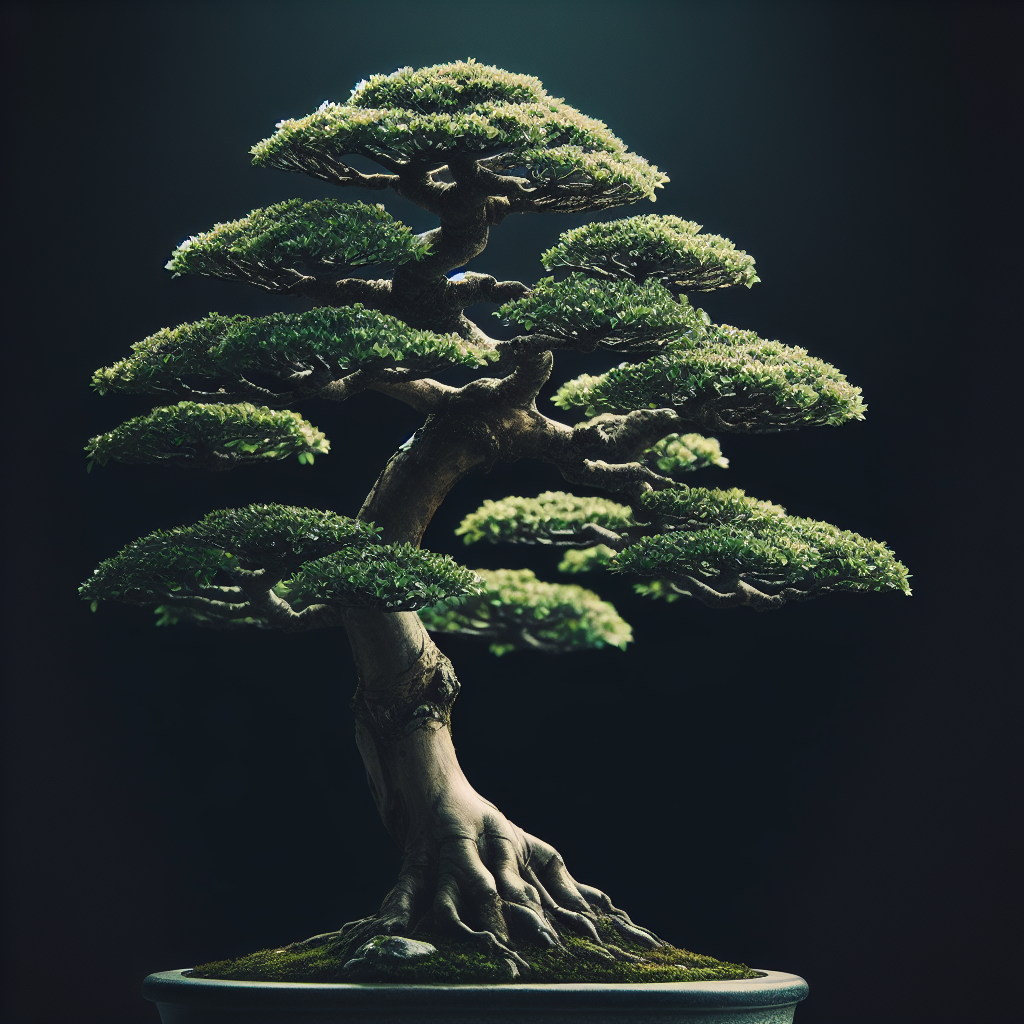
Imagine stepping into a world where every tree is a work of art, meticulously and lovingly crafted into miniature masterpieces. This captivating article will introduce you to the enchanting world of bonsai, an ancient art form that has been practiced for centuries. Through this introduction, you will learn about the history and techniques behind bonsai, as well as the profound cultural significance that these miniature trees hold. Get ready to embark on a journey that will inspire awe and appreciation for the beauty and dedication that goes into creating these living works of art.
Origins of Bonsai
History of Bonsai in Ancient China
The art of bonsai can be traced back to ancient China, where it was initially practiced as a way to cultivate miniaturized plants for decorative purposes. The Chinese believed that these tiny trees possessed spiritual qualities and brought good luck to their owners. Bonsai, known as “penzai” in Chinese, was a highly regarded art form that required great skill and patience.
Japanese Influence on Bonsai
During the Tang Dynasty in China, around the 7th century, the art of bonsai began to spread to Japan. Japanese monks and scholars traveled to China to study Buddhism, and they also brought back the practice of bonsai with them. In Japan, bonsai became deeply intertwined with Zen Buddhism and was considered a meditative and spiritual practice.
The Japanese further refined the art of bonsai, developing unique styles and techniques that emphasized harmony with nature and an appreciation for the imperfections of natural beauty. Bonsai was not only a form of artistic expression but was also seen as a way to connect with the divine and attain enlightenment.
Spread of Bonsai to the Western World
Bonsai remained relatively unknown outside of Asia until the late 19th century when Japan opened its doors to the Western world. As trade and cultural exchange increased, bonsai plants began to capture the interest and fascination of Westerners. The first recorded exhibition of bonsai in the West took place in London in 1909, where it garnered much attention and praise.
Today, bonsai has gained popularity worldwide, with enthusiasts from all corners of the globe practicing and appreciating this ancient art form. The spread of bonsai to the Western world has resulted in the development of new styles and techniques, as well as increased accessibility to a wider variety of bonsai tree species.
Philosophy and Symbolism of Bonsai
Connection to Nature
One of the fundamental principles of bonsai is its deep connection to nature. Bonsai trees are miniature representations of their full-sized counterparts, capturing the essence and beauty of nature in a compact form. By caring for a bonsai tree, you can cultivate a profound appreciation for the natural world, fostering a sense of harmony and tranquility.
Balance and Harmony
Balance and harmony are core principles in the philosophy of bonsai. When designing a bonsai tree, careful consideration is given to the placement of branches and the overall composition of the tree. Creating a sense of harmony and balance between the various elements of the tree is essential to achieving a visually appealing and emotionally satisfying bonsai.
Symbolism in Bonsai Design
Bonsai trees often carry symbolic meanings that reflect the values and beliefs of their owners. For example, an upright and strong-rooted bonsai can represent resilience and upward growth, while a cascading bonsai might symbolize the passage of time or the transient nature of life. The selection of pot, style, and the arrangement of branches all contribute to the symbolism and storytelling potential of a bonsai tree.
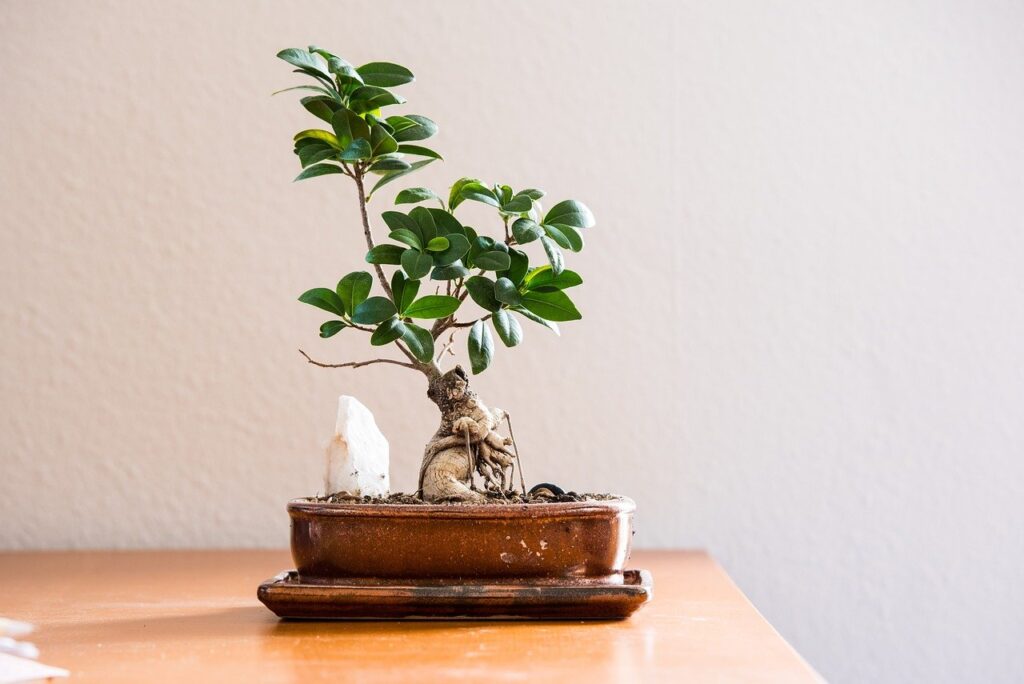
Basic Techniques and Styles of Bonsai
Pruning and Trimming
One of the most crucial techniques in bonsai cultivation is pruning and trimming. Pruning involves cutting away unwanted branches or growth, while trimming refers to the maintenance of the tree’s shape and refinement of its foliage. Pruning and trimming help maintain the size and proportion of the tree, ensuring its aesthetic appeal and overall health.
Wiring and Shaping
Wiring and shaping are techniques used to train the branches and trunk of a young bonsai tree into the desired shape. By wrapping wire around the branches and gently bending them, bonsai enthusiasts can create elegant and natural-looking curves and twists. This process requires meticulous attention to detail and patience.
Root Pruning and Repotting
Root pruning and repotting are essential for the overall health and long-term survival of a bonsai tree. As the roots grow and become compacted within the limited space of the bonsai pot, they must be periodically pruned and repotted to maintain proper airflow and nutrient absorption. Root pruning involves carefully trimming and pruning the roots, while repotting entails transferring the tree to a fresh pot with new soil.
Formal Upright Style
The formal upright style, also known as the “chokkan” style in Japanese, is characterized by a straight and upright trunk with well-balanced branches that gradually decrease in size as they ascend. This style aims to replicate the natural growth pattern of a full-sized tree, showcasing a strong and stable posture.
Informal Upright Style
The informal upright style, known as the “moyogi” style, is more relaxed and asymmetrical compared to the formal upright style. This style often features a slightly curved trunk and branches that twist and turn in a more organic manner. The informal upright style is intended to evoke a sense of movement and spontaneity.
Cascade Style
The cascade style, or “kengai” in Japanese, is characterized by a trunk that cascades downward, mimicking the growth of a tree on the edge of a cliff. In this style, the branches and foliage typically flow downward, creating a dramatic and visually striking effect. It requires careful pruning and wiring to maintain the desired shape and balance.
Literati Style
The literati style, or “bunjin” style, is inspired by traditional Chinese ink paintings and embodies a sense of elegance, simplicity, and sophistication. Trees in the literati style often have a twisted or contorted trunk with sparse foliage arranged in an artistic and deliberate manner. This style encourages creativity and imagination in representing the harmony between man and nature.
Windswept Style
The windswept style, or “fukinagashi” in Japanese, seeks to capture the effect of strong winds on the growth of a tree. The branches in this style appear as if they have been battered and bent by the relentless force of the wind. Achieving the windswept style requires careful pruning, wiring, and positioning of the branches to create an illusion of movement and perpetual struggle.
Group Planting Style
The group planting style, known as “yose-ue” or “forest planting,” involves the arrangement of multiple bonsai trees in a single container, creating the illusion of a miniature forest or landscape. This style requires careful consideration of the tree’s individual characteristics, including size, shape, and foliage, to create a harmonious composition.
Bonsai Forests and Landscapes
Bonsai forests and landscapes take the group planting style to a larger scale, creating a captivating scene that resembles a natural woodland or landscape. These arrangements often incorporate different tree species, rocks, and moss to create a sense of depth, perspective, and visual interest. Bonsai forests and landscapes require meticulous attention to detail in both tree selection and layout to achieve a balanced and realistic depiction of nature.
Choosing the Right Tree for Bonsai
Traditional Bonsai Species
There are numerous plant species suitable for bonsai cultivation. Some traditional bonsai species include the Japanese maple, Chinese elm, juniper, pine, and azalea. These species have a long history in bonsai cultivation and offer a wide range of characteristics and styles to explore. Each species has its unique growth patterns, leaf shapes, and color variations, allowing for diverse and creative bonsai expressions.
Suitable Characteristics for Bonsai
When selecting a tree for bonsai, certain characteristics are desirable. Trees with small leaves, fine branches, and natural-looking bark are often favored, as they are better suited to the miniature scale of bonsai. Additionally, trees that are adaptable to pruning, wiring, and root pruning are more manageable and responsive to bonsai techniques.
Considerations for Indoor vs. Outdoor Bonsai
The decision to keep bonsai trees indoors or outdoors depends on the specific species and environmental conditions. While some species can thrive indoors, many bonsai trees require the natural elements found outdoors, such as sunlight, temperature fluctuations, and wind. It is essential to research the specific needs of each species and create a suitable environment to ensure the tree’s health and vitality.
Options for Purchasing Bonsai Trees
There are several options for purchasing bonsai trees, depending on your level of experience and budget. Bonsai specialty nurseries and garden centers offer a wide selection of established trees in various stages of development. Online retailers also provide access to a vast range of bonsai trees, including pre-bonsai material for those interested in starting from scratch. Additionally, attending bonsai exhibitions or joining local bonsai clubs can provide opportunities to purchase trees directly from experienced enthusiasts.
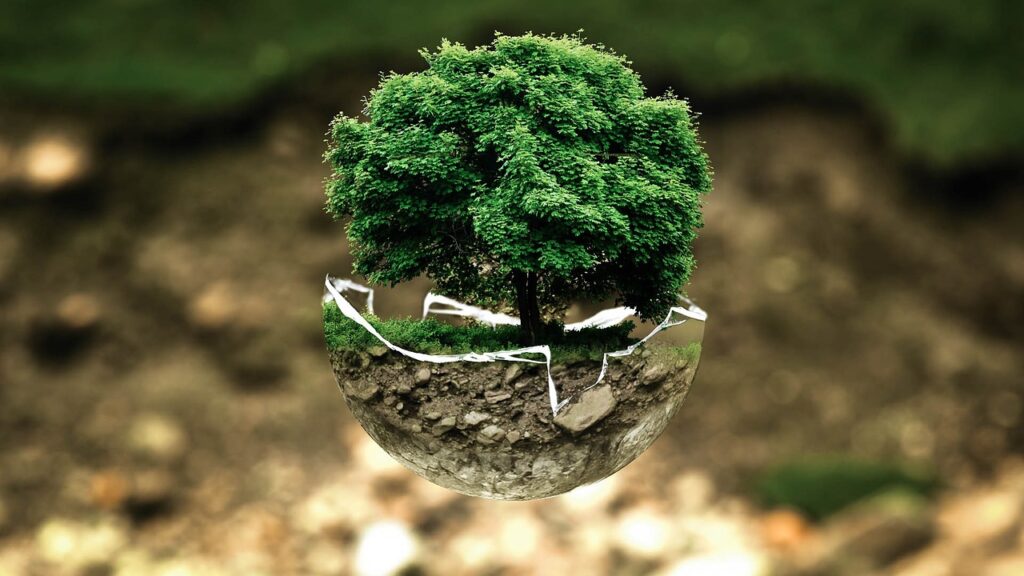
Bonsai Tools and Equipment
Pruning Shears
Pruning shears, or secateurs, are essential tools for bonsai enthusiasts. They are used for precise cutting and trimming of branches, roots, and foliage. It is crucial to invest in high-quality pruning shears to ensure clean cuts that promote the tree’s health and minimize damage.
Root Hooks
Root hooks are used to gently separate and comb through the roots during repotting and root pruning. They help loosen the compacted soil around the roots and untangle any entwined roots without causing damage. Root hooks come in various sizes and shapes to accommodate different root systems.
Bonsai Wire
Bonsai wire is used for shaping and training the branches of a bonsai tree. It is typically made of aluminum or copper and comes in various thicknesses. By wrapping wire around the branches and gently bending them, bonsai enthusiasts can guide the growth and create the desired shape.
Bonsai Soil
Bonsai soil is specially formulated to provide optimal drainage and aeration while retaining the right amount of moisture. It consists of a balanced mixture of organic matter, such as peat moss or pine bark, and inorganic components, such as akadama or pumice. Good bonsai soil is essential for the health and growth of a bonsai tree.
Watering Cans and Spray Bottles
Watering cans with a fine nozzle and spray bottles are used to provide the necessary moisture to bonsai trees. It is essential to water bonsai trees regularly but avoid overwatering, as excessive moisture can lead to root rot and other issues. The use of a fine mist spray can help maintain proper humidity levels for certain species.
Bonsai Pots
Bonsai pots, or bonsai containers, come in various shapes, sizes, and materials. They are designed to complement the tree’s style and create a visual harmony between the tree and its container. Bonsai pots have drainage holes to prevent waterlogging and promote healthy root growth.
Turntables
Turntables, or bonsai turntables, are rotating platforms used to make it easier to view and work on the bonsai from all angles. They allow for precise positioning of the tree during pruning, wiring, and styling, ensuring thorough and even attention to every aspect of the bonsai.
Caring for Bonsai Trees
Watering and Humidity
Proper watering is crucial for the health and survival of bonsai trees. The frequency and amount of water needed depend on various factors such as tree species, pot size, and environmental conditions. It is essential to water thoroughly, ensuring that the entire root system receives moisture. Maintaining proper humidity levels through misting or using humidity trays can also benefit certain species.
Sunlight and Temperature
Bonsai trees require adequate sunlight for photosynthesis and overall growth. The amount of sunlight needed varies depending on the species, with some preferring full sun exposure, while others thrive in partial shade. It is important to research the specific light requirements of each bonsai tree and provide a suitable environment accordingly. Temperature fluctuations, within the tree’s tolerance range, are also beneficial as they promote dormancy and overall health.
Fertilizing
Fertilizing provides essential nutrients for the growth and development of bonsai trees. Balanced bonsai fertilizers, specifically formulated for the needs of these miniature trees, are readily available. Fertilization frequency and strength depend on the tree’s current stage and species. Regular monitoring of the tree’s health and response to fertilizers will help adjust the fertilization schedule accordingly.
Pest and Disease Control
Like any other plants, bonsai trees are susceptible to pests and diseases. Regular inspection of the tree’s foliage and branches can help detect any signs of infestation or disease early on. Integrated pest management techniques, such as natural predators, organic sprays, or targeted treatments, can help control pests and keep the bonsai tree healthy. If a disease is diagnosed, prompt action should be taken to prevent its spread to other trees.
Seasonal Considerations
Bonsai trees have different needs throughout the year, and understanding seasonal considerations is crucial for their care. Spring and fall are ideal times for repotting and root pruning, as the trees are in an active growth phase. During summer, increased watering and shading may be necessary to help protect the tree from excessive heat and sun exposure. In winter, protection from freezing temperatures, such as placing the tree in an unheated but sheltered area, is important for the tree’s survival.
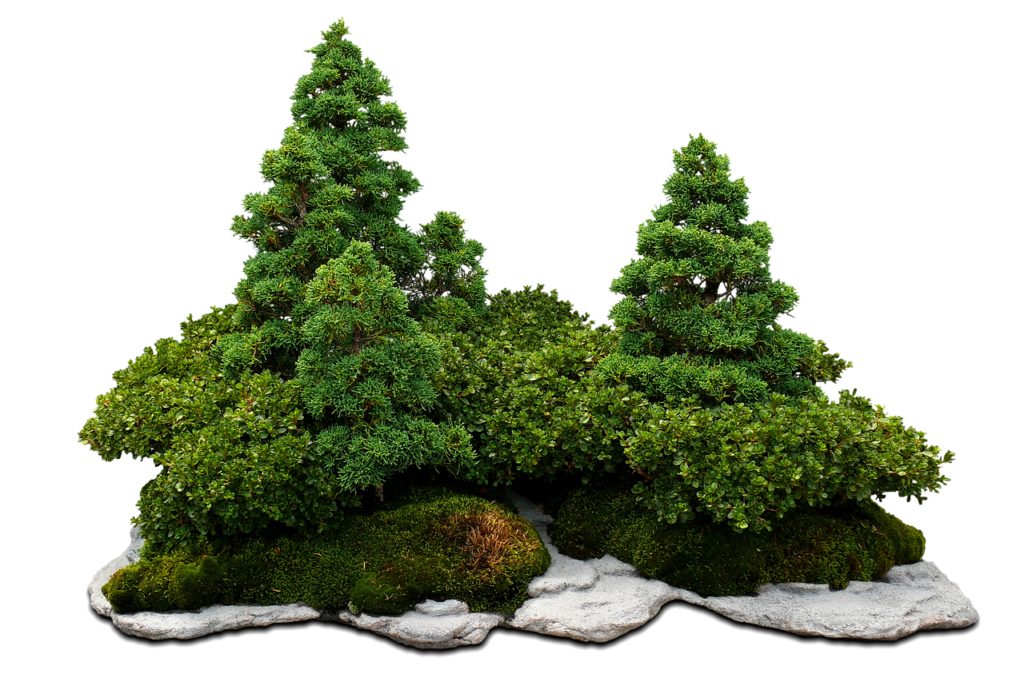
Training and Maintenance of Bonsai Trees
Pruning Techniques
Pruning techniques are used to shape and refine the structure of bonsai trees. Different pruning methods, such as branch pruning, tip pruning, and bud pinching, are employed to control growth, maintain the desired shape, and encourage ramification. The timing and extent of pruning depend on the species and the tree’s stage of development.
Wiring and Shaping Methods
Wiring is a technique used to shape the branches and trunk of a bonsai tree. By wrapping wire around the branches and gently bending them, bonsai enthusiasts can guide the growth and create the desired shape. It requires careful consideration of wire thickness and duration of application to avoid wire marks and prevent wire cutting into the bark.
Repotting and Root Pruning
Repotting and root pruning are essential for the overall health and long-term survival of a bonsai tree. Repotting involves carefully removing the tree from its current pot, trimming back the roots, and placing it in fresh bonsai soil. Root pruning ensures the tree’s future growth by maintaining a healthy and compact root system that can efficiently absorb water and nutrients.
Creating and Maintaining Nebari
Nebari refers to the surface roots that radiate outward from the base of a bonsai tree. Nebari enhances the visual appeal of the tree and gives the impression of an aged and well-established specimen. Nebari can be created and enhanced through careful root pruning, exposing and training surface roots to spread evenly around the trunk.
Branch Development
Branch development is crucial for creating the desired shape and structure of a bonsai tree. By strategically selecting and developing primary, secondary, and tertiary branches, bonsai enthusiasts can achieve a well-balanced and visually appealing tree. Proper pruning, wiring, and selective defoliation techniques are employed to encourage branch ramification and refine the overall tree structure.
Foliage Management
Foliage management plays a significant role in maintaining and enhancing the aesthetics of a bonsai tree. Techniques such as defoliation, leaf pruning, and leaf-stripping are employed to control leaf size, promote ramification, and achieve desired image and density of foliage. These techniques require careful consideration and timing to avoid stressing the tree.
Bonsai Exhibitions and Contests
Prominent Bonsai Exhibitions
Bonsai exhibitions provide an opportunity for bonsai enthusiasts to showcase their prized trees and celebrate the artistry of bonsai. Some prominent bonsai exhibitions around the world include the Kokufu Ten Exhibition in Tokyo, Japan, which is one of the largest and most prestigious bonsai exhibitions, and the Artisans Cup in Oregon, USA, which showcases innovative and artistic approaches to bonsai.
Criteria for Judging Bonsai
Bonsai exhibitions often have specific criteria for judging the trees on display. Some common criteria include the overall design and composition of the tree, the health and vigor of the tree, the quality and refinement of the foliage and branches, and the adherence to traditional or contemporary bonsai styles. Each exhibition may have its own rules and guidelines for judging.
Contemporary Trends in Bonsai Artistry
The art of bonsai is not static and continues to evolve with contemporary trends. While traditional styles and techniques are still practiced and celebrated, there is also a growing interest in experimental and innovative approaches to bonsai. Artists and enthusiasts are pushing the boundaries of design, incorporating new elements, materials, and styles to create unique and captivating bonsai compositions.
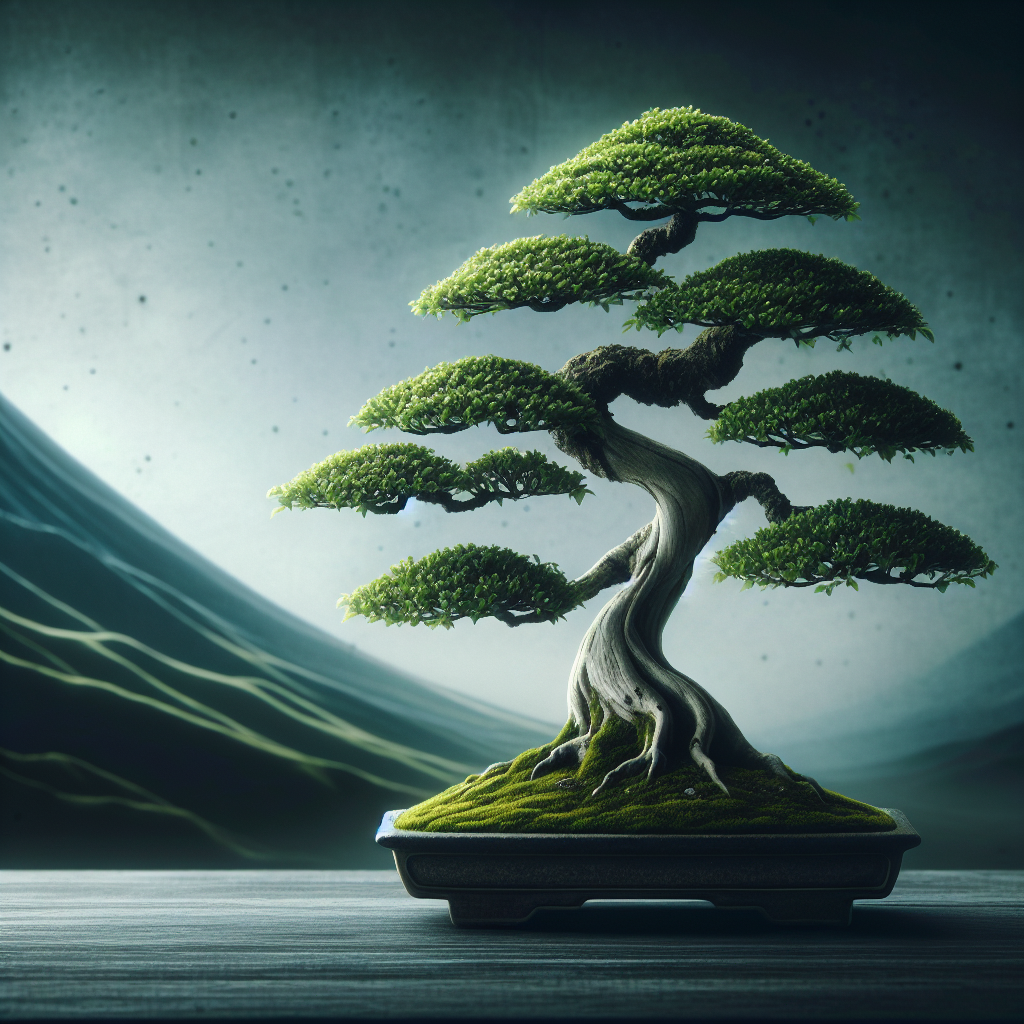
Bonsai Care for Beginners
Choosing a Beginner-friendly Species
For beginners, it is advisable to start with species that are more forgiving and adaptable to bonsai techniques. Some beginner-friendly species include the Chinese elm, juniper, or ficus. These species are relatively robust, respond well to pruning and shaping, and can withstand a range of environmental conditions.
Essential Tools for Beginners
As a beginner, investing in a few essential tools will set you up for success in bonsai cultivation. These tools include pruning shears, a concave cutter for branch pruning, bonsai wire for shaping, bonsai soil for optimal growth, and a watering can for maintaining moisture levels. Starting with these basic tools will allow you to perform essential bonsai techniques and ensure the health and vitality of your trees.
Step-by-Step Guide to Basic Bonsai Care
Basic bonsai care involves understanding the specific needs of your tree species and providing the necessary conditions for its growth and well-being. This includes proper watering, providing adequate sunlight, regular fertilizing, monitoring for pests and diseases, and seasonal maintenance tasks such as pruning and repotting. Following a step-by-step guide tailored to your tree species will help you navigate the basics of bonsai care with confidence.
Popular Misconceptions and FAQs about Bonsai
Are Bonsai Trees Miniature Versions of Full-sized Trees?
Contrary to popular belief, bonsai trees are not genetically modified miniatures of full-sized trees. They are meticulously cultivated and shaped through careful pruning, wiring, and root control techniques. Bonsai trees are grown in shallow containers, which restrict their growth and create the illusion of a fully developed tree in miniature form.
Is Bonsai a Form of Torturing Trees?
Bonsai is often mistakenly perceived as a form of torture for trees due to their small size and manipulated growth. In reality, bonsai cultivation involves careful and considerate techniques to create a healthy and miniature representation of a tree. Bonsai trees can live for many years, and with proper care and attention, they can thrive and bring joy to their owners.
Can Anyone Practice Bonsai?
Bonsai is a highly accessible hobby that can be practiced by anyone with an interest in nature and a willingness to learn. While mastering advanced techniques may require time and experience, beginners can start with simple species and basic techniques. Bonsai cultivation offers endless opportunities for learning and self-expression, regardless of age or skill level.
Do Bonsai Trees Have a Short Lifespan?
Bonsai trees, with proper care and attention, can live for decades or even centuries. The lifespan of a bonsai tree depends on various factors such as species, environmental conditions, and the care it receives. Bonsai trees, like any other living organism, require regular maintenance and care to ensure their long-term survival and vitality.
Can Bonsai Trees be Kept Indoors?
While certain species can be kept indoors, many bonsai trees are best suited for outdoor cultivation. Outdoor trees benefit from natural sunlight, temperature fluctuations, and wind, which contribute to their overall health and growth. It is important to research the specific needs of each species and create a suitable environment that closely mimics their natural habitat. Some tropical species can be kept indoors, but they require adequate light and humidity to thrive.
